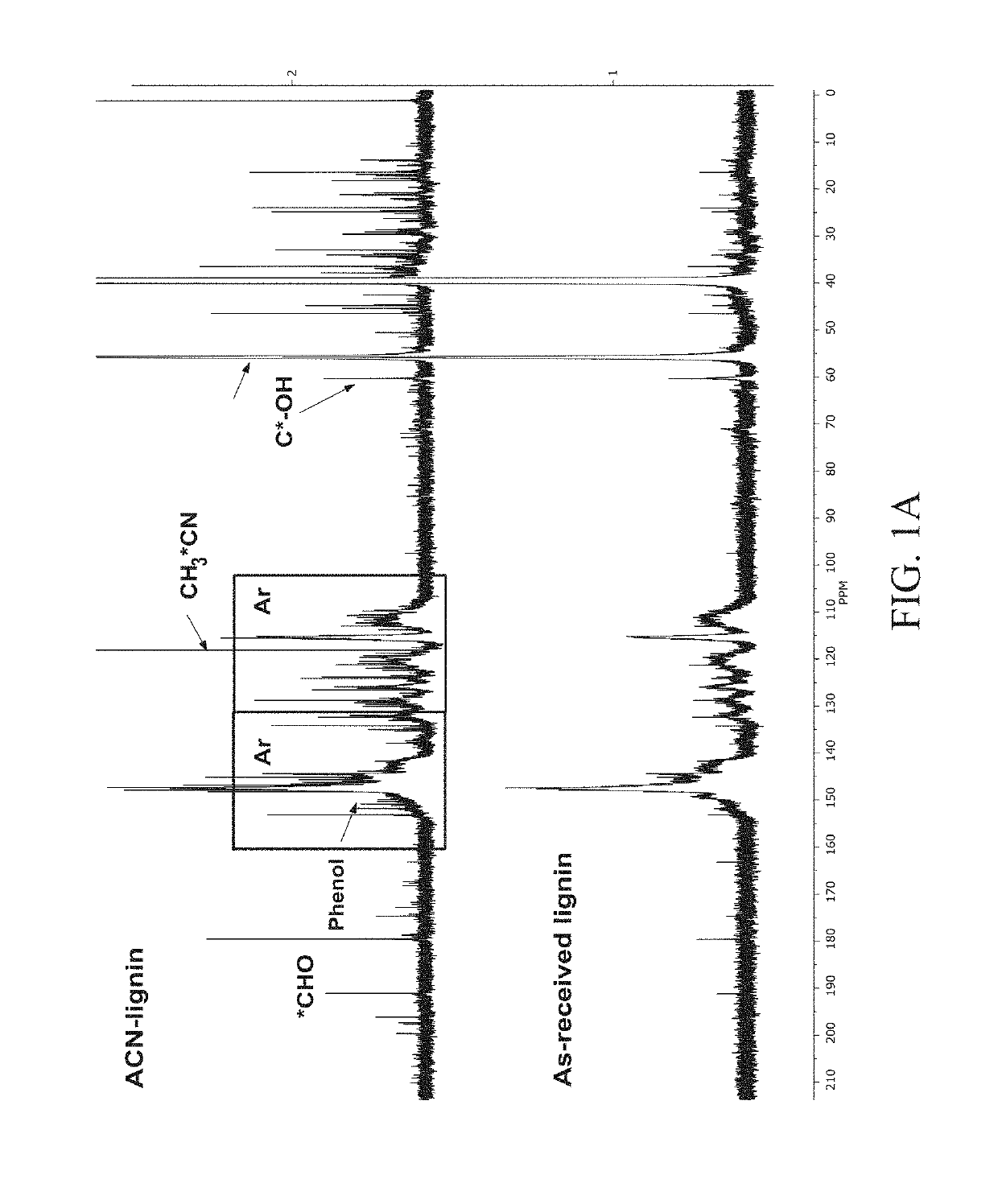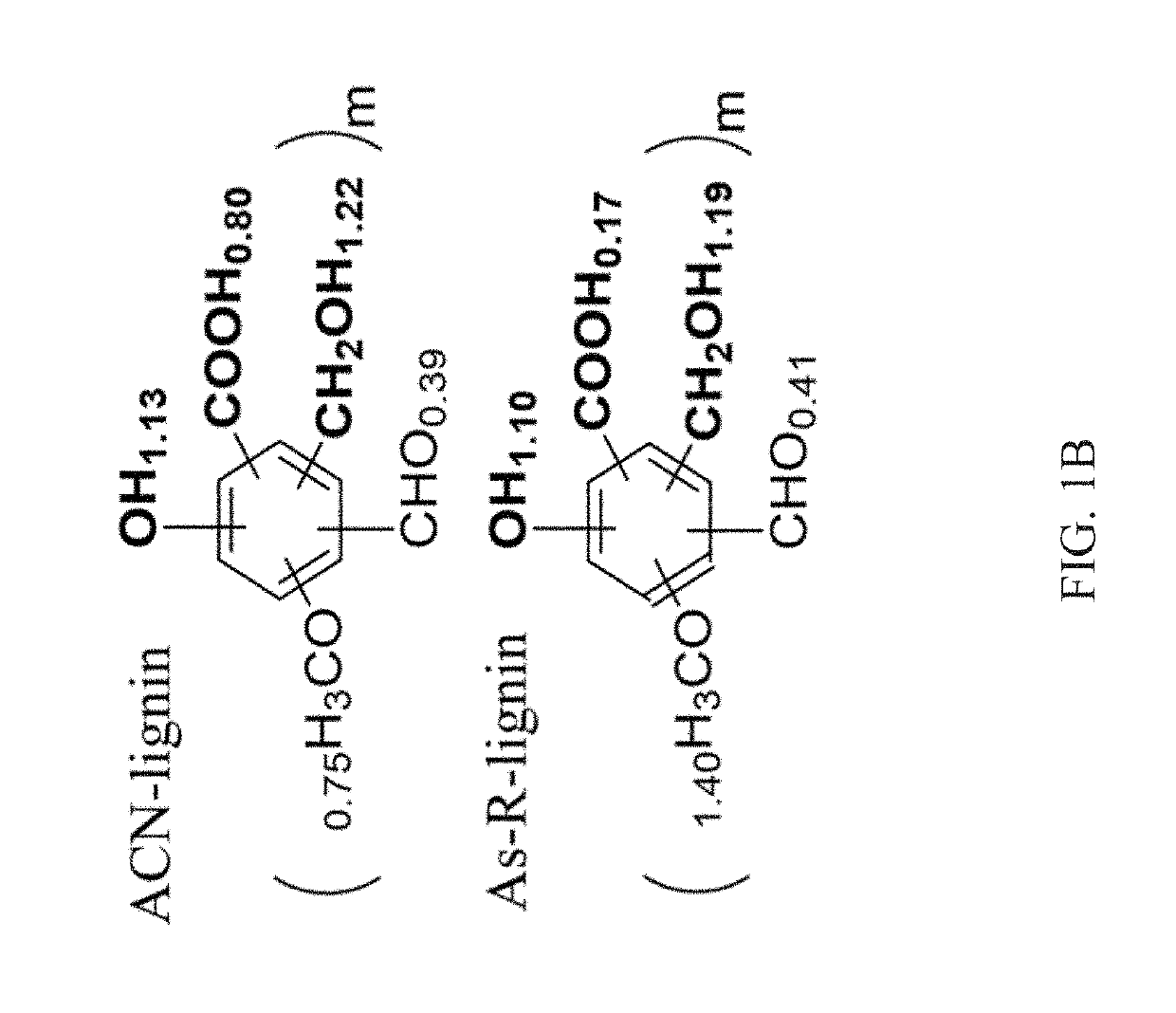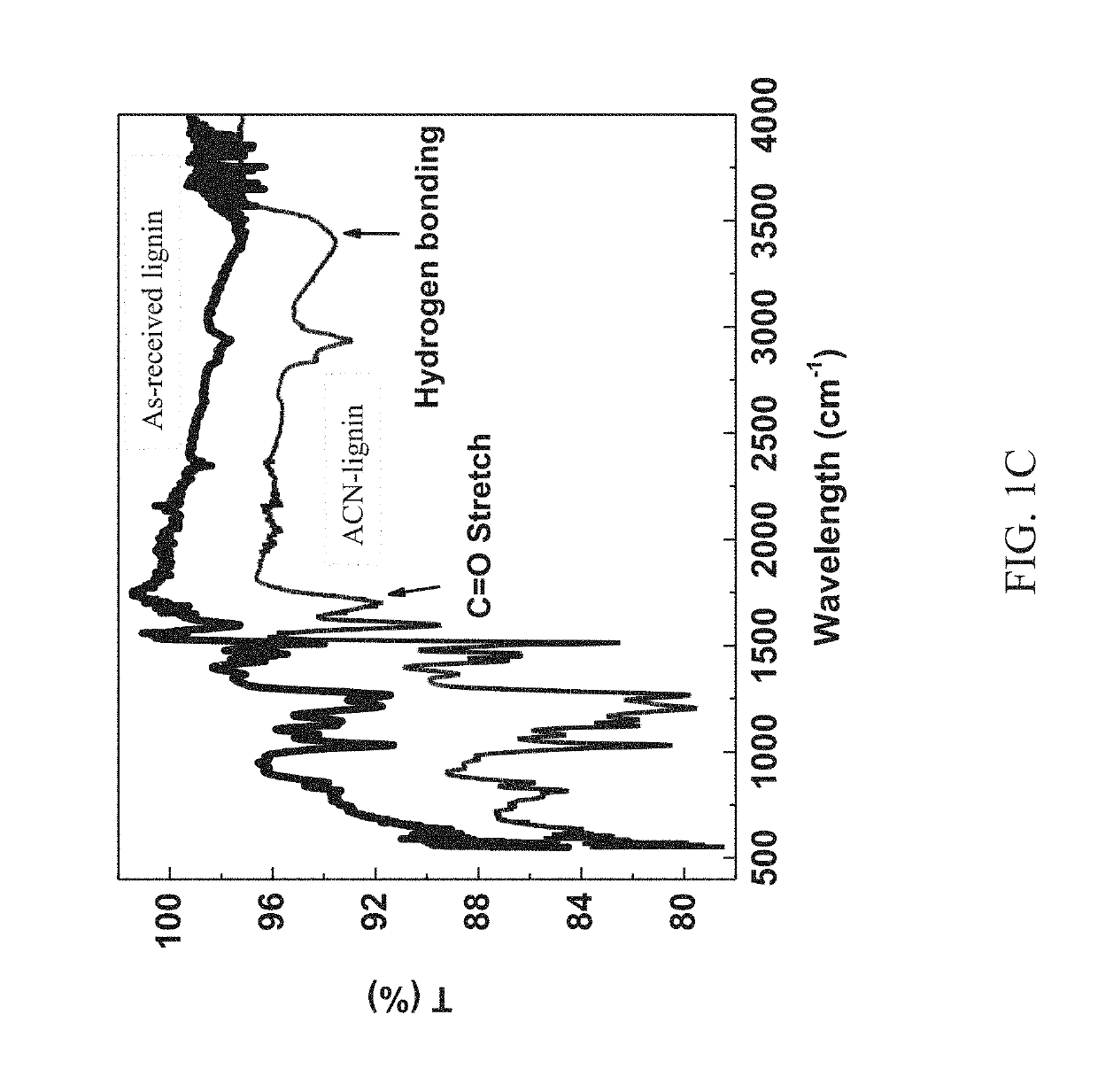Functional lignin, and its use in producing blends, copolymers, and self-healing elastomers
a technology of lignin and lignin-based plastics, which is applied in the direction of waste based fuel, etc., can solve the problems of limiting the range of applications of lignin-containing plastics, lignin remains a highly difficult and challenging material to convert into useful products, and lignin-containing plastics generally lack the rubber elasticity, strength and toughness required for many industrial and commercial applications, so as to achieve significant strength and toughness
- Summary
- Abstract
- Description
- Claims
- Application Information
AI Technical Summary
Benefits of technology
Problems solved by technology
Method used
Image
Examples
examples
[0062]Lignin Extraction
[0063]A valuable lignin substance was obtained by solvent fractionation from as-received pine lignin that had been depolymerized by Kraft pulping followed by precipitation in an acidic medium. This fractionated substance maintains a rigid structure but also contains more reactive groups. As further discussed below, a primary benefit of this renewable material is its self-healing ability along with superior mechanical properties.
[0064]Specifically, 100 g of as-received Kraft softwood lignin was stirred in 700 mL of acetonitrile, and the mixture was centrifuged to separate and remove the insoluble material. The soluble lignin material (hereinafter also referred to as “ACN-lignin”) was dried by a rotary evaporator until no solvent could be observed. The ACN-lignin was then further dried for another 1 hour. The yield of ACN-lignin was 13%.
[0065]The composition of lignin before and after fractionation was characterized by nuclear magnetic resonance (NMR) techniques...
PUM
| Property | Measurement | Unit |
|---|---|---|
| Temperature | aaaaa | aaaaa |
| Temperature | aaaaa | aaaaa |
| Size | aaaaa | aaaaa |
Abstract
Description
Claims
Application Information
 Login to View More
Login to View More - R&D
- Intellectual Property
- Life Sciences
- Materials
- Tech Scout
- Unparalleled Data Quality
- Higher Quality Content
- 60% Fewer Hallucinations
Browse by: Latest US Patents, China's latest patents, Technical Efficacy Thesaurus, Application Domain, Technology Topic, Popular Technical Reports.
© 2025 PatSnap. All rights reserved.Legal|Privacy policy|Modern Slavery Act Transparency Statement|Sitemap|About US| Contact US: help@patsnap.com



